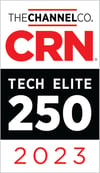Never before has it been more necessary to be able to allocate storage quickly and efficiently. However, provisioning storage resources can be a guessing game. When a company uses physical storage, provisioning it takes time and planning. IT leaders must estimate how much storage they need based on projected data capacity needs, which tend to grow exponentially. Time needs to be allotted for requisitioning the storage resources and implementing them.
Companies tend to waste money by overprovisioning storage out of fear of being caught short by data growth. Overprovisioning leads to storage resources that sit idle, taking up valuable data center space. The alternative is to risk being unable to meet the demands of big data, a dire consequence when so many business decisions are dependent on data analytics.
To avoid waste while still meeting storage needs, companies need to rethink their approach to data center infrastructure. Software-defined data center enables companies to right-size their storage by using software to virtualize resources.
What Is Software-Defined Data Center?
A software-defined data center virtualizes the entire data center infrastructure. SDDC is made up of software-defined storage (SDS), software-defined networking (SDN), and software-defined security (SDSec). Workloads and functions are abstracted from the physical hardware using software. Many functions are automated for better data and network management, as well as optimized security.
SDS is an integral part of SDDC. With SDS, software running on a server or dedicated appliance virtualizes the storage behind it. Data management is unified using a single pane of glass, eliminating silos and ensuring that information is stored on the appropriate type of storage.
Research and Markets reported that the SDDC market is being driven by the COVID-19 pandemic era of working from home. According to market researchers, SDDC adoption has been necessary to meet increasing data volumes created by remote work and multicloud environments.
Scaling With SDDC
SDDC eliminates the need to predict capacity. Instead, capacity can be scaled up or down as storage requirements change. New storage arrays or nodes can be added quickly and easily when workloads increase. Storage is provisioned from the SDDC provider’s pool of resources and added to the virtual machine. Additional storage resources can be supplied exactly when an application needs them.
Some types of SDDC solutions allow for granular scaling to more precisely meet capacity needs. Scaling can be achieved by adding, moving, and removing single nodes. As with hyperconverged infrastructure, supporting architecture, such as the network, can be scaled up or down to match the changing storage capacity.
Storage as a Service
With SDDC, storage infrastructure is delivered as a service. As IT as a service, SDDC uses a consumption model similar to cloud services. Your company pays for what you need, usually at a predictable monthly rate.
When your company needs to add more storage or functionality, you simply request it from the provider and your rate will be adjusted accordingly. Deployment and provisioning are abstracted from storage hardware for greater flexibility and agility. Automation and data pooling are included as part of the storage service.
Starting Your Data Center Transformation
Maintaining the right data storage capacity is only the beginning of what your company can achieve with SDDC. Adopting SDDC allows organizations to achieve data center transformation by virtualizing servers, networking, and security along with storage.
ProActive Solutions includes SDDC as part of our Data Center Transformation solutions. Through our partnership with Dell EMC, a leader in SDDC, we can work with your IT team to develop a customized strategy for moving to SDDC.
Find out more about SDDC and other software-defined solutions. Get your copy of the ProActive eBook The Complete Guide to Software-Defined Everything.



